当前位置:网站首页>【Day1】 deep-learning-basics
【Day1】 deep-learning-basics
2022-07-04 09:37:00 【weixin_45965693】
ps:我还是觉得csdn比博客园好用。记在这里吧。
get!New
1. yield关键字
1.含有yield的函数称为【生成器函数】,调用【生成器函数】返回的结果称为【生成器】
2.【生成器】对象实际上就是【迭代器】,那么肯定满足【迭代器协议】:
__iter__返回迭代器对象自身__next__每次返回一个迭代数据,如果没有数据,则要抛出StopIteration异常
它的运行方式和迭代器是一致的:
- 通过
next()函数调用 - 每次
next()都会在遇到yield后返回结果 - 如果函数运行结束(即遇到
return)则抛出StopIteration异常
4.yield关键字最根本的作用是改变了函数的性质,返回对象,和类差不多
5.yield语句(Python2.2):Simple Generators
6.yield表达式(Python2.5):Coroutines【协程】 via Enhanced Generators
# 本函数已保存在d2lzh包中方便以后使用
def data_iter(batch_size, features, labels):
num_examples = len(features)
indices = list(range(num_examples))
random.shuffle(indices) # 样本的读取顺序是随机的
for i in range(0, num_examples, batch_size):
j = nd.array(indices[i: min(i + batch_size, num_examples)])
yield features.take(j), labels.take(j) # take函数根据索引返回对应元素
batch_size = 10
for X, y in data_iter(batch_size, features, labels):
print(X, y)
break # 比较随机得遍历一遍就好了
2. 使用autograd自动求导
from mxnet import autograd
x.attach_grad()申请存储梯度所需要的内存。
例如:函数 y = 2 x ⊤ x y = 2\boldsymbol{x}^{\top}\boldsymbol{x} y=2x⊤x 关于 x \boldsymbol{x} x 的梯度应为 4 x 4\boldsymbol{x} 4x
首先,需要调用autograd.record()要求MXNet记录与求梯度有关的计算。
(可以对【控制流(如条件和循环控制)】求梯度)
with autograd.record():
y = 2 * nd.dot(x.T, x)
然后,y.backward()自动求梯度
线性回归linear-regression
scratch
from mxnet import autograd, nd
import random
训练集 X ∈ R 1000 × 2 \boldsymbol{X} \in \mathbb{R}^{1000 \times 2} X∈R1000×2
样本1000,特征个数2
标签 y = X w + b + ϵ \boldsymbol{y} = \boldsymbol{X}\boldsymbol{w} + b + \epsilon y=Xw+b+ϵ
线性回归模型真实权重 w = [ 2 , − 3.4 ] ⊤ \boldsymbol{w} = [2, -3.4]^\top w=[2,−3.4]⊤
偏差 b = 4.2 b = 4.2 b=4.2
随机噪声项 ϵ \epsilon ϵ(噪声项 ϵ \epsilon ϵ服从均值为0、标准差为0.01的正态分布)
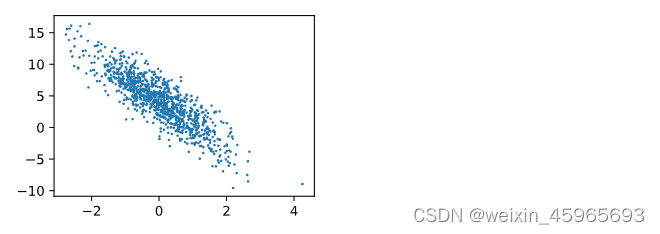
x:features y:labels
初始化【模型参数】:权重初始化成均值为0、标准差为0.01的正态随机数,偏差则初始化成0
定义【损失函数】:平方损失
定义【优化算法】:小批量随机梯度下降算法
训练模型:每次迭代中,我们根据当前读取的小批量数据样本(特征X和标签y),通过调用反向函数backward计算小批量随机梯度并调用【优化算法】sgd迭代【模型参数】来优化【损失函数】。
#初始化模型参数
w = nd.random.normal(scale=0.01, shape=(num_inputs, 1))
b = nd.zeros(shape=(1,))
params = [w, b]
for param in params:
param.attach_grad()
#定义模型
def net(X):
return nd.dot(X, w) + b
#损失函数
def squared_loss(y_hat, y): # 本函数已保存在d2lzh包中方便以后使用
return (y_hat - y.reshape(y_hat.shape)) ** 2 / 2
#优化
def sgd(params, lr, batch_size): # 本函数已保存在d2lzh包中方便以后使用
for param in params:
param[:] = param - lr * param.grad / batch_size
lr = 0.03
num_epochs = 3
net = linreg
loss = squared_loss
for epoch in range(num_epochs): # 训练模型一共需要num_epochs个迭代周期
# 在每一个迭代周期中,会使用训练数据集中所有样本一次(假设样本数能够被批量大小整除)。X
# 和y分别是小批量样本的特征和标签
for X, y in data_iter(batch_size, features, labels):
with autograd.record():
l = loss(net(X, w, b), y) # l是有关小批量X和y的损失
l.backward() # 小批量的损失对模型参数求梯度
sgd([w, b], lr, batch_size) # 使用小批量随机梯度下降迭代模型参数
train_l = loss(net(features, w, b), labels)
print('epoch %d, loss %f' % (epoch + 1, train_l.mean().asnumpy()))
gluon
from mxnet.gluon import nn
net = nn.Sequential()
net.add(nn.Dense(1))
from mxnet import init
net.initialize(init.Normal(sigma=0.01))
from mxnet.gluon import loss as gloss
loss = gloss.L2Loss() # 平方损失又称L2范数损失
from mxnet import gluon
trainer = gluon.Trainer(net.collect_params(), 'sgd', {
'learning_rate': 0.03})
num_epochs = 3
for epoch in range(1, num_epochs + 1):
for X, y in data_iter:
with autograd.record():
l = loss(net(X), y)
l.backward()
trainer.step(batch_size)
l = loss(net(features), labels)
print('epoch %d, loss: %f' % (epoch, l.mean().asnumpy()))
多类逻辑回归softmax-regression
scratch
问题1. exp会导致数值稳定性变差
https://freemind.pluskid.org/machine-learning/softmax-vs-softmax-loss-numerical-stability/
def softmax(X):
X_exp = X.exp()# 变成正数
partition = X_exp.sum(axis=1, keepdims=True)# 对行求和
return X_exp / partition # 这里应用了广播机制
# 使得,每一行都是正和为1
def net(X):
return softmax(nd.dot(X.reshape((-1,num_inputs)), W) + b)
【交叉熵损失函数】:将两个概率分布的负交叉熵作为目标值
最小化这个值等价于最大化这两个概率的相似度
【计算精度】:预测概率最高的那个类作为预测的类,通过比较真实标号计算
def cross_entropy(yhat, y):
return - nd.pick(nd.log(yhat),y)
def accuracy(output, label):
return nd.mean(output.argmax(axis=1)==label).asscalar()
# 本函数已保存在d2lzh包中方便以后使用。该函数将被逐步改进:它的完整实现将在“图像增广”一节中
# 描述
def evaluate_accuracy(data_iter, net):
acc_sum, n = 0.0, 0
for X, y in data_iter:
y = y.astype('float32')
acc_sum += accuracy(net(X),y)
n += y.size
return acc_sum / n
训练+accuracy test_acc
num_epochs, lr = 5, 0.1
# 本函数已保存在d2lzh包中方便以后使用
def train_ch3(net, train_iter, test_iter, loss, num_epochs, batch_size,
params=None, lr=None, trainer=None):
for epoch in range(num_epochs):
train_l_sum, train_acc_sum, n = 0.0, 0.0, 0
for X, y in train_iter:
with autograd.record():
y_hat = net(X)
l = loss(y_hat, y).sum()
l.backward()
if trainer is None:
d2l.sgd(params, lr, batch_size)
else:
trainer.step(batch_size) # “softmax回归的简洁实现”一节将用到
y = y.astype('float32')
train_l_sum += l.asscalar()
train_acc_sum += (y_hat.argmax(axis=1) == y).sum().asscalar()
n += y.size
test_acc = evaluate_accuracy(test_iter, net)
print('epoch %d, loss %.4f, train acc %.3f, test acc %.3f'
% (epoch + 1, train_l_sum / n, train_acc_sum / n, test_acc))
train_ch3(net, train_iter, test_iter, cross_entropy, num_epochs, batch_size,
[W, b], lr)
gluon
net = nn.Sequential()
with net.name_scope():
net.add(gluon.nn.Flatten())# 输入
net.add(nn.Dense(10))# 输出
net.initialize(init.Normal(sigma=0.01))
# Softmax和交叉熵一起
softmax_cross_entropy = gluon.loss.SoftmaxCrossEntropyLoss()
# 使用学习率为0.1的小批量随机梯度下降作为优化算法
trainer = gluon.Trainer(net.collect_params(), 'sgd', {
'learning_rate': 0.1})
多层感知机
Scratch
激活函数:在层之间插入【非线性】的激活函数 r e l u ( x ) = m a x ( x , 0 ) relu(x)=max(x,0) relu(x)=max(x,0)(计算简单)
def relu(X):
return nd.maximum(X, 0)
def net(X):
X = X.reshape((-1, num_inputs))
H = relu(nd.dot(X, W1) + b1)
return nd.dot(H, W2) + b2
gluon
net = nn.Sequential()
with net.name_scope():
net.add(nn.Flatten())
net.add(nn.Dense(256, activation='relu'),nn.Dense(10))
# 多加几个隐含层
net.add(nn.Dense(256, activation='relu'),nn.Dense(10))
net.add(nn.Dense(10))
net.initialize(init.Normal(sigma=0.01))
欠拟合和过拟合underfit-overfit
欠拟合:训练误差就很大
过拟合:训练误差 泛化误差 相差过大
多项式拟合
y ^ = b + ∑ k = 1 K x k w k \hat{y}=b+\sum_{k=1}^{K}x^{k}w_{k} y^=b+k=1∑Kxkwk
目标:找一个K阶多项式,其由向量 w w w和位移 b b b组成,来最好地近似每个样本 x x x和 y y y,并以平方误差为损失函数。
特别地,一阶多项式拟合又叫线性拟合。
具体生成数据样本
y = 1.2 x − 3.4 x 2 + 5.6 x 3 + 5.0 + n o i s e y=1.2x-3.4x^{2}+5.6x^{3}+5.0+noise y=1.2x−3.4x2+5.6x3+5.0+noise
n_train, n_test, true_w, true_b = 100, 100, [1.2, -3.4, 5.6], 5
features = nd.random.normal(shape=(n_train + n_test, 1))
poly_features = nd.concat(features, nd.power(features, 2),
nd.power(features, 3))
labels = (true_w[0] * poly_features[:, 0] + true_w[1] * poly_features[:, 1]
+ true_w[2] * poly_features[:, 2] + true_b)
labels += nd.random.normal(scale=0.1, shape=labels.shape)
略
def fit_and_plot(train_features, test_features, train_labels, test_labels)
三阶多项式拟合
fit_and_plot(poly_features[:n_train, :], poly_features[n_train:, :],
labels[:n_train], labels[n_train:])
线性拟合
fit_and_plot(features[:n_train, :], features[n_train:, :], labels[:n_train],
labels[n_train:])
训练样本不足
fit_and_plot(poly_features[0:2, :], poly_features[n_train:, :], labels[0:2],
labels[n_train:])
正则化reg【罚】
引入 L 2 \bold{L}_{2} L2范数正则化
我们在训练时的最小化就变为:
l o s s + λ ∑ p ∈ p a r a m s ∣ ∣ p ∣ ∣ 2 2 loss+\lambda\sum_{p\in params}||p||_{2}^{2} loss+λp∈params∑∣∣p∣∣22
1.fit loss 2.权衡模型不要特别复杂。直观上, L 2 \bold{L}_{2} L2试图惩罚较大绝对值的参数值,使得 w w w和 b b b变小一点。
值得注意的是,在测试模型时, λ \lambda λ必须为0。
def net(X, lambd, w, b):
return nd.dot(X, w) + b + lambd * ((w**2).sum() + b**2)
用高维线性回归引入一个【过拟合】问题
使用如下的线性函数来生成数据样本
y = 0.05 + ∑ i = 1 p 0.01 x i + n o i s e y=0.05+\sum_{i=1}^{p}0.01x_{i}+noise y=0.05+i=1∑p0.01xi+noise
边栏推荐
- QTreeView+自定义Model实现示例
- Vanishing numbers
- Write a mobile date selector component by yourself
- 技术管理进阶——如何设计并跟进不同层级同学的绩效
- 【leetcode】29. Divide two numbers
- PHP is used to add, modify and delete movie information, which is divided into foreground management and background management. Foreground users can browse information and post messages, and backgroun
- Servlet基本原理与常见API方法的应用
- Lauchpad x | MODE
- Go context 基本介绍
- Exercise 9-4 finding books (20 points)
猜你喜欢

Hands on deep learning (40) -- short and long term memory network (LSTM)
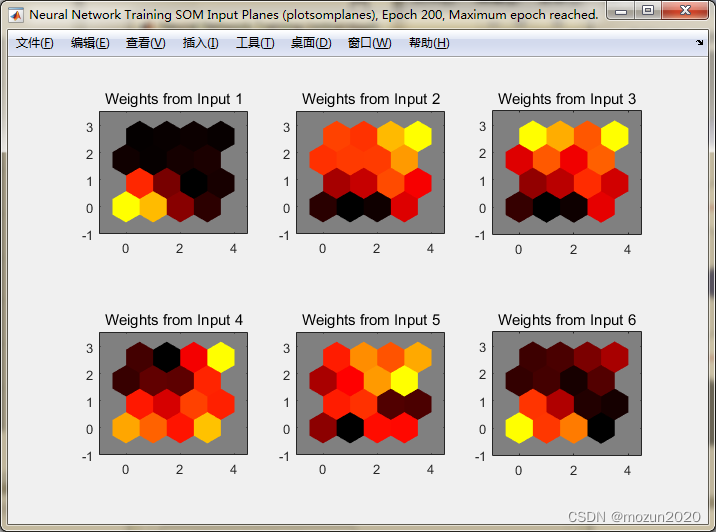
MATLAB小技巧(25)竞争神经网络与SOM神经网络
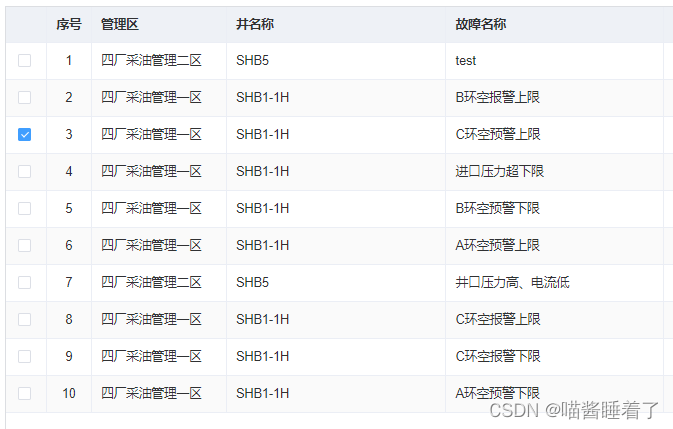
el-table单选并隐藏全选框
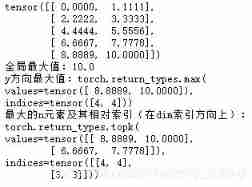
Hands on deep learning (III) -- Torch Operation (sorting out documents in detail)

Ultimate bug finding method - two points

uniapp 处理过去时间对比现在时间的时间差 如刚刚、几分钟前,几小时前,几个月前

智能网关助力提高工业数据采集和利用

2. Data type

Normal vector point cloud rotation
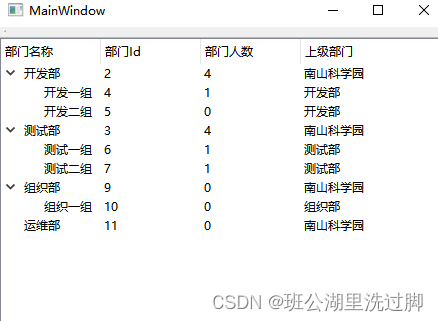
Qtreeview+ custom model implementation example
随机推荐
Basic data types in golang
Write a jison parser from scratch (4/10): detailed explanation of the syntax format of the jison parser generator
Four common methods of copying object attributes (summarize the highest efficiency)
mmclassification 标注文件生成
Hands on deep learning (41) -- Deep recurrent neural network (deep RNN)
自动化的优点有哪些?
技术管理进阶——如何设计并跟进不同层级同学的绩效
转载:等比数列的求和公式,及其推导过程
C语言指针面试题——第二弹
Write a jison parser from scratch (1/10):jison, not JSON
MATLAB小技巧(25)竞争神经网络与SOM神经网络
Hands on deep learning (38) -- realize RNN from scratch
Go context 基本介绍
IIS configure FTP website
Latex download installation record
Sort out the power node, Mr. Wang he's SSM integration steps
Golang Modules
How to display √ 2 on the command line terminal ̅? This is actually a blog's Unicode test article
Launpad | Basics
Baidu R & D suffered Waterloo on three sides: I was stunned by the interviewer's set of combination punches on the spot